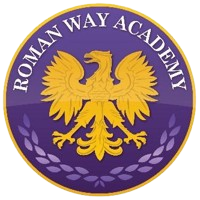Design and Technology
How we teach, learn and assess Design and Technology at Roman Way Academy
At Roman Way Academy, we want Design and Technology to give pupils the opportunities, responsibilities, and experiences they need to enjoy and be successful in their design journey. Beginning with the EYFS, children are encouraged to explore different mediums, develop their control and concentration, and begin to create for a purpose as they design and make products that solve real and relevant problems. As the children progress, we teach Design and Technology using a themed approach linked to our Topic learning, alongside deliberate teaching of key skills. Children at Roman Way will have the opportunity to study the lives and works of famous architects, designers, inventors and chefs, from a variety of cultures and periods. We intend for all children to acquire appropriate subject knowledge, skills and understanding as set out in the National Curriculum with strong cross-curricular links.
The teaching of Design and Technology at Roman Way is based on the National Curriculum. Deliberate teaching of key skills occurs as discrete learning opportunities, with children given opportunities to explore architects, inventors, designers, chefs, designs, products and materials. Pupils are taught the importance of health and safety issues related to the activities being undertaken whilst providing an enriching, practical experience. Projects follow a similar structure to ensure pupils design, make and evaluate their products and develop the creative, technical and practical skills needed to participate in an increasingly technological environment. In the EYFS, pupils will explore and use a variety of materials through a combination of child-initiated and adult-directed activities. The key areas of D&T covered throughout the school are:
- Textiles;
- Mechanisms;
- Structures;
- Food technology, and electrical systems.
Teachers seek to develop subject-specific vocabulary through explicit teaching and modelling. Key design and technology skills and knowledge are revisited frequently, to make learning memorable, relevant and easy to retrieve.
Teachers assess Art regularly through formative assessments in a variety of ways. The Roman Way progressive skills ladder and the long term overview which shows the progression of Design and technology towards the end of key stage National Curriculum outcomes, supports the planning and assessment of Art. Teachers will start lessons with a retrieval question which gives the children the opportunity to question, explore and strengthen their understanding.
Lessons will also have a learning objective, allowing assessment at the end of the lesson to be clear and concise. Both teachers and support staff work together to support children and reflect upon their understanding and skills in order to inform future lessons. Other types of formative assessments are also used within Art and Design as part of the Roman Way Assessment Strategy. This enables teachers to provide immediate verbal feedback to support and challenge pupils. Termly assessments are recorded on Insight and progress is reported to parents at the end of each academic year as part of the annual report.
Useful links:
Google Arts and Culture – explore sculptures in detail and virtually step inside an art gallery
BBC Good Food – recipes for cooking and baking with children
Get Kids Cooking with Jamie Oliver Exploratorium Pie ideas Library
